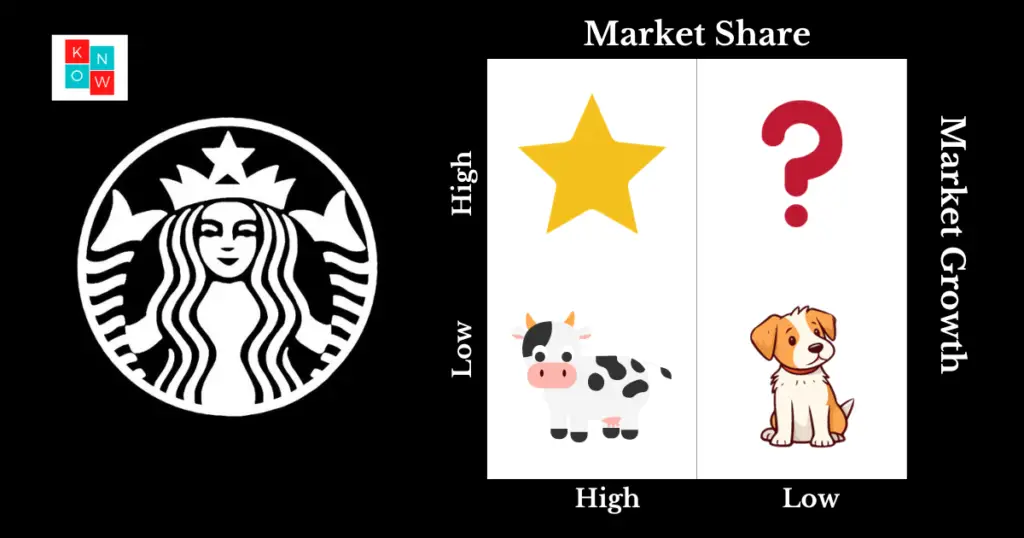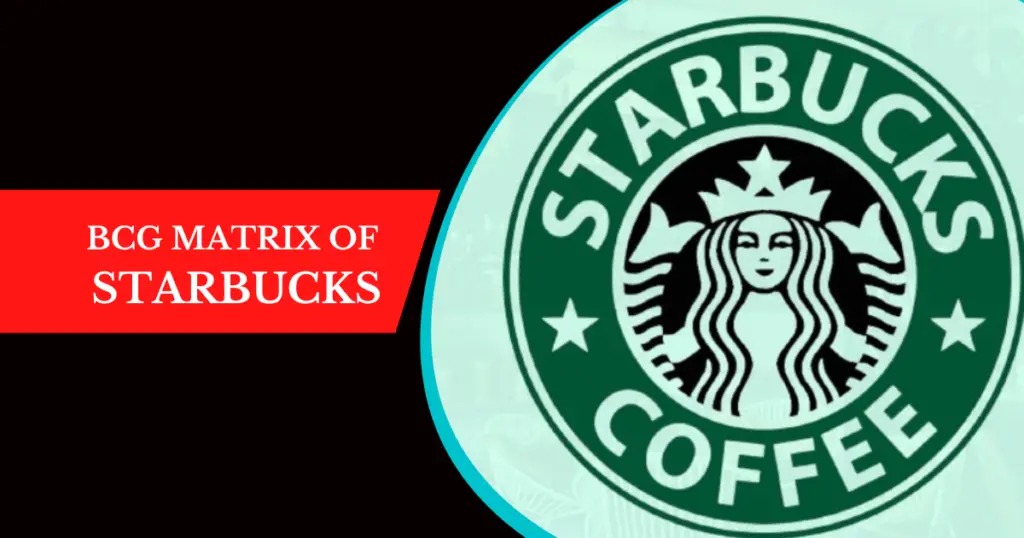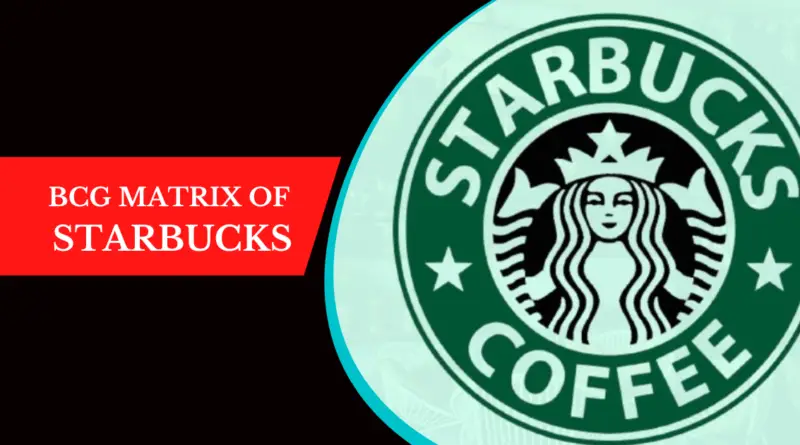Analyzing Starbucks Using the BCG Matrix: A Strategic Perspective
In this blog post, we will delve into the BCG Matrix and explore how it can be applied to analyze the strategic position of Starbucks, one of the world’s leading coffeehouse chains. The BCG Matrix, also known as the Boston Consulting Group Matrix, is a valuable tool for businesses to assess their product portfolio and make informed decisions about resource allocation. By examining Starbucks through the lens of the BCG Matrix, we can gain insights into its various business units and their growth potential.
Understanding the BCG Matrix

The BCG Matrix is a two-dimensional framework that categorizes a company’s products or business units based on their market growth rate and relative market share. It consists of four quadrants: Stars, Cash Cows, Question Marks, and Dogs.
Stars: These are high-growth products or business units that have a strong market share. They generate substantial revenue and have the potential to become future Cash Cows.
Cash Cows: These are mature products or business units that have a dominant market share. They generate consistent cash flow and often require minimal investment.
Question Marks (or Problem Children): These are products or business units with low market share but high growth potential. They require substantial investment to increase their market share.
Dogs: These are products or business units with low market share in a low-growth market. They generate minimal profits and are often considered for divestment.
BCG Matrix of Starbucks

Starbucks as a Star
Starbucks can be considered a Star in the BCG Matrix due to its high market growth rate and substantial market share. The company’s global presence, strong brand reputation, and continuous innovation have contributed to its success. Starbucks has expanded its product offerings beyond coffee, including food items, merchandise, and digital experiences, which have further fueled its growth.
The company’s strategic initiatives, such as the introduction of Starbucks Rewards and expansion into new markets, have propelled its revenue and market share. Moreover, Starbucks has successfully leveraged its brand to penetrate new segments, such as ready-to-drink beverages and premium coffee experiences.
As a Star, Starbucks should continue to invest in these high-growth areas to maintain its market dominance. This may involve launching new products, expanding into untapped markets, and further enhancing customer experiences.
Starbucks' Cash Cow Business Units
Within the BCG Matrix, Starbucks has several Cash Cow business units. One prime example is its core coffeehouse business. Starbucks has established a strong market presence in this segment, generating consistent revenue and cash flow. The company’s extensive store network, loyal customer base, and effective supply chain management contribute to the profitability of this business unit.
In addition to its coffeehouse business, Starbucks’ licensed products and partnerships with grocery stores and other retailers also serve as Cash Cows. These channels allow Starbucks to reach a wider customer base and generate revenue through the sale of packaged coffee, ready-to-drink beverages, and other merchandise.
As Cash Cows, these business units require minimal investment and can provide a stable cash flow to support Starbucks’ future growth initiatives.
Question Marks and Dogs in Starbucks' Portfolio
While Starbucks’ portfolio primarily consists of Stars and Cash Cows, it may also have a few Question Marks and Dogs. These could include new ventures or product lines that have yet to gain significant market share or face challenges in a stagnant market.
To manage these Question Marks, Starbucks needs to carefully evaluate their growth potential and invest resources accordingly. This may involve market research, product improvements, or strategic partnerships to increase their market share.
In the case of Dogs, Starbucks may need to consider divestment or repositioning strategies to minimize losses and focus on more promising opportunities.
Conclusion
Analyzing Starbucks using the BCG Matrix provides valuable insights into the strategic positioning of its business units. As a Star, Starbucks should continue to invest in its high-growth areas to maintain its market dominance. Its Cash Cow business units generate consistent cash flow and can support future initiatives. Meanwhile, managing Question Marks and Dogs is crucial for maintaining a balanced portfolio and identifying areas for improvement or potential divestment. By leveraging this strategic framework, Starbucks can make informed decisions about resource allocation and drive sustainable growth in the highly competitive coffee industry.



